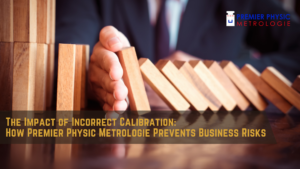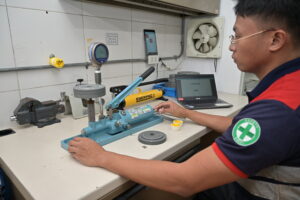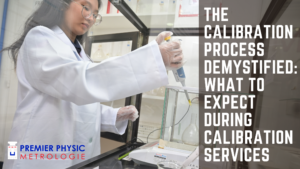In today’s technologically advanced and highly regulated world, accurate and reliable measurements are the bedrock of countless operations. From ensuring the safety and efficacy of pharmaceuticals and the precision of manufacturing processes to guaranteeing the integrity of environmental monitoring and the accuracy of scientific research, the validity of measurement data is paramount. At the heart of ensuring this validity lies a robust and well-executed calibration program.
A successful calibration program is not merely about periodically checking instruments; it is a comprehensive system encompassing policies, procedures, personnel, and documentation, all working in concert to maintain the accuracy and reliability of measuring equipment. A poorly implemented or neglected calibration program can lead to a cascade of negative consequences, including flawed products, regulatory non-compliance, increased operational costs, compromised safety, and erosion of trust.
This comprehensive guide delves into the essential key components that underpin a successful calibration program. We will explore each element in detail, highlighting its importance and providing practical insights into its effective implementation. Whether you are establishing a new calibration program or seeking to optimize an existing one, understanding these fundamental components is crucial for achieving and sustaining measurement accuracy, ensuring regulatory compliance, and fostering operational excellence within your organization.
1. Clearly Defined Policies and Objectives: Setting the Foundation for Accuracy
The cornerstone of any successful calibration program is a set of clearly defined policies and objectives. These foundational elements provide the overarching framework and direction for all calibration activities.
- Policy Statement: A formal policy statement should articulate the organization’s commitment to maintaining accurate and reliable measurements. This statement should outline the purpose of the calibration program, its scope, and the responsibilities of relevant personnel. It should emphasize the importance of calibration in achieving organizational goals related to quality, safety, and compliance.
- Specific Objectives: Beyond the general commitment, the calibration program should have specific, measurable, achievable, relevant, and time-bound (SMART) objectives. These objectives might include:
- Maintaining a defined level of measurement uncertainty for critical instruments.
- Achieving a specified calibration frequency for different types of equipment.
- Ensuring a high percentage of instruments are within their defined tolerance limits at the time of calibration.
- Reducing the number of out-of-tolerance instruments found during calibration.
- Meeting the calibration requirements of relevant regulatory standards (e.g., ISO 9001, ISO/IEC 17025).
- Improving the efficiency and cost-effectiveness of the calibration process.
- Scope of the Program: The policy should clearly define the scope of the calibration program, specifying which types of measuring equipment are included and which are excluded. This ensures clarity and prevents ambiguity regarding which instruments require calibration. The criteria for inclusion should be based on the impact of the instrument’s accuracy on product quality, safety, or regulatory compliance.
- Responsibility and Authority: The policy should clearly assign responsibilities and authorities for various aspects of the calibration program, including:
- Overall program management.
- Calibration scheduling and execution.
- Selection of calibration service providers (if applicable).
- Maintenance of calibration records.
- Management of out-of-tolerance conditions.
- Training of calibration personnel.
- Periodic review and improvement of the program.
Well-defined policies and objectives provide a clear roadmap for the calibration program, ensuring that all activities are aligned with the organization’s overall goals and regulatory requirements.
2. Comprehensive Inventory of Measuring Equipment: Knowing What Needs Calibration
A fundamental prerequisite for an effective calibration program is a complete and up-to-date inventory of all measuring equipment that falls within the scope of the program. This inventory serves as the foundation for scheduling, tracking, and managing calibration activities.
- Unique Identification: Each piece of measuring equipment should be assigned a unique identification number or asset tag. This allows for unambiguous tracking and record-keeping.
- Equipment Details: The inventory should include essential details for each instrument, such as:
- Equipment name and model number.
- Manufacturer.
- Serial number.
- Location within the facility.
- Date of purchase or acquisition.
- Measurement range and units.
- Required accuracy or tolerance limits.
- Current calibration status (e.g., calibrated, due for calibration, out of calibration).
- Calibration frequency.
- Last calibration date and next due date.
- Categorization and Prioritization: The inventory can be categorized based on factors such as criticality to product quality, safety, or regulatory compliance. Instruments deemed more critical may require more frequent calibration or stricter tolerance limits. Prioritization helps in allocating resources effectively and focusing on the most important equipment.
- Regular Updates: The equipment inventory should be a dynamic document that is regularly updated to reflect new acquisitions, disposals, and changes in equipment location or status. A designated individual or team should be responsible for maintaining the accuracy of the inventory.
- Software and Databases: Utilizing calibration management software or databases can significantly streamline the process of maintaining the equipment inventory, tracking calibration schedules, and generating reports.
A comprehensive and well-maintained equipment inventory ensures that all relevant measuring instruments are included in the calibration program and that their calibration status is readily accessible.
3. Defined Calibration Procedures: Ensuring Consistency and Accuracy in Execution
Standardized and well-documented calibration procedures are essential for ensuring consistency and accuracy in the execution of calibration activities, regardless of who performs the calibration.
- Step-by-Step Instructions: Each calibration procedure should provide clear, step-by-step instructions on how to perform the calibration, including:
- The required reference standards and their traceability.
- The environmental conditions under which the calibration should be performed (e.g., temperature, humidity).
- The specific points to be calibrated across the instrument’s measurement range.
- The acceptance criteria or tolerance limits for each calibration point.
- The tools and equipment required for the calibration.
- Safety precautions to be observed.
- Visual Aids: Where appropriate, calibration procedures should include visual aids such as diagrams, photographs, or flowcharts to clarify complex steps or connections.
- Consideration of Manufacturer Recommendations: Manufacturer’s calibration manuals and recommendations should be consulted and incorporated into the organization’s procedures where applicable.
- Validation of Procedures: New or revised calibration procedures should be validated to ensure they produce accurate and repeatable results. This may involve performing trial calibrations and comparing the results to known standards.
- Regular Review and Updates: Calibration procedures should be reviewed and updated periodically to reflect changes in equipment, standards, regulations, or best practices. A formal process for procedure review and approval should be established.
- Accessibility: Calibration procedures should be readily accessible to the personnel performing the calibrations. Electronic document management systems can facilitate easy access and version control.
Well-defined and consistently followed calibration procedures minimize the risk of errors and ensure that calibrations are performed to a high standard of accuracy and repeatability.
4. Traceable Reference Standards: Linking Measurements to National or International Standards
The accuracy of any calibration ultimately depends on the accuracy of the reference standards used. Traceability is the unbroken chain of comparisons relating a measuring instrument or a standard to a stated reference, usually a national or international standard.
- Hierarchy of Standards: A calibration program should establish a hierarchy of reference standards, with each standard being calibrated against a standard of higher accuracy. The highest-level standards should be traceable to national metrology institutes (NMIs) such as NIST (National Institute of Standards and Technology) or other recognized international standards organizations.
- Calibration Certificates: All reference standards used in the calibration program must have valid calibration certificates from accredited laboratories that demonstrate their traceability to national or international standards. These certificates should include information about the standard’s accuracy, the calibration method used, the environmental conditions during calibration, and the uncertainty of measurement.
- Calibration Intervals for Standards: Reference standards also require periodic calibration to maintain their accuracy. The calibration intervals for reference standards should be determined based on factors such as their stability, usage frequency, and the required level of accuracy.
- Environmental Control for Standards: Reference standards should be stored and used under controlled environmental conditions (e.g., temperature, humidity) as specified in their calibration certificates to maintain their accuracy.
- Proper Handling and Maintenance: Reference standards should be handled and maintained with utmost care to prevent damage or degradation that could affect their accuracy.
Establishing and maintaining traceability of reference standards ensures that all measurements performed within the calibration program are ultimately linked to a recognized and reliable basis, providing confidence in their accuracy.
5. Competent Calibration Personnel: Ensuring Expertise and Adherence to Procedures
The success of a calibration program hinges on the competence of the personnel who perform the calibrations. Properly trained and qualified individuals are essential for executing calibration procedures accurately and effectively.
- Training and Qualification: Calibration personnel should receive comprehensive training on the principles of metrology, the specific calibration procedures they are authorized to perform, the use of reference standards, safety precautions, and record-keeping requirements. A formal qualification process should be in place to verify their competency.
- Continuing Education: The field of metrology and calibration is constantly evolving. Calibration personnel should participate in ongoing training and professional development activities to stay abreast of new technologies, standards, and best practices.
- Understanding of Measurement Uncertainty: Calibration personnel should have a good understanding of the concept of measurement uncertainty and its impact on calibration results. They should be able to interpret calibration certificates and assess the suitability of reference standards for the required accuracy.
- Adherence to Procedures: Competent personnel understand the importance of following established calibration procedures meticulously to ensure consistency and accuracy.
- Record-Keeping Skills: Accurate and thorough record-keeping is a critical aspect of calibration. Personnel should be trained on proper documentation practices.
- Ethical Conduct: Calibration personnel should adhere to ethical principles and report calibration results honestly and accurately.
Investing in the training and development of calibration personnel is crucial for ensuring the technical integrity and reliability of the calibration program.
6. Suitable Calibration Environment: Minimizing External Influences on Accuracy
The environment in which calibrations are performed can significantly impact the accuracy of the results. A suitable calibration environment minimizes external influences that could introduce errors.
- Temperature and Humidity Control: Many calibrations require specific temperature and humidity conditions to be maintained within defined tolerances. Calibration laboratories or designated calibration areas should have environmental controls in place to monitor and regulate these parameters.
- Vibration Control: Vibrations can affect the readings of sensitive measuring instruments. Calibration areas should be located away from sources of significant vibration or equipped with vibration isolation measures.
- Electromagnetic Interference (EMI) Control: Electromagnetic fields can interfere with the operation of electronic measuring equipment. Measures should be taken to minimize EMI in calibration areas.
- Cleanliness: Dust and other contaminants can affect the performance of measuring instruments and reference standards. Calibration areas should be kept clean and well-maintained.
- Lighting: Adequate lighting is essential for performing calibrations accurately and safely.
- Stable Work Surfaces: Calibration should be performed on stable and level work surfaces to ensure the proper positioning and operation of equipment.
Maintaining a suitable calibration environment demonstrates a commitment to achieving accurate and reliable calibration results.
7. Robust Calibration Records and Documentation: Providing Traceability and Evidence of Compliance
Comprehensive and well-maintained calibration records and documentation are essential for providing traceability, demonstrating compliance with quality standards and regulations, and supporting audit trails.
- Calibration Certificates: A calibration certificate should be issued for each instrument that has been calibrated. This certificate should include:
- Identification of the calibrated instrument.
- Date of calibration.
- Calibration procedure used.
- Reference standards used and their traceability.
- Environmental conditions during calibration.
- Calibration results (as-found and as-left data).
- Uncertainty of measurement.
- Statement of conformity to specifications (if applicable).
- Name and signature of the person who performed the calibration.
- Due date for the next calibration.
- Calibration History: A record of the calibration history for each instrument should be maintained, including past calibration dates, results, and any corrective actions taken.
- Equipment Inventory Records: As mentioned earlier, the equipment inventory should be maintained and linked to calibration records.
- Calibration Procedures: The documented calibration procedures should be readily available.
- Training Records of Personnel: Records of the training and qualification of calibration personnel should be maintained.
- Records of Reference Standard Calibrations: Calibration certificates for all reference standards should be kept on file.
- Non-Conformance Reports and Corrective Actions: Any instances of out-of-tolerance conditions or non-conformances identified during calibration, along with the corrective actions taken, should be documented.
- Audit Records: Records of internal and external audits of the calibration program should be maintained.
- Retention of Records: A defined policy should specify the retention period for all calibration records.
Well-maintained calibration records provide evidence that the calibration program is being implemented effectively and that measurements are traceable and reliable.
8. Effective Management of Out-of-Tolerance Conditions: Ensuring Corrective Action and Preventing Recurrence
Despite a well-implemented calibration program, instruments may occasionally be found to be out of tolerance during calibration. A successful program has a robust system for managing these situations.
- Clear Definition of Out-of-Tolerance: The program should clearly define what constitutes an out-of-tolerance condition based on the instrument’s specifications and the requirements of its application.
- Procedure for Handling Out-of-Tolerance Instruments: A documented procedure should outline the steps to be taken when an instrument is found to be out of tolerance, including:
- Immediate identification and segregation of the instrument.
- Notification of relevant personnel.
- Investigation to determine the cause of the out-of-tolerance condition.
- Assessment of the impact of the out-of-tolerance measurements on product quality, safety, or other relevant factors.
- Decision on corrective action (e.g., adjustment, repair, replacement).
- Documentation of the out-of-tolerance condition and the corrective action taken.
- Recall and Retesting of Affected Products: If the out-of-tolerance instrument was used to make measurements that could have affected product quality or safety, a procedure for recall and retesting of potentially affected products should be in place.
- Preventive Actions: The root causes of out-of-tolerance conditions should be analyzed to identify potential preventive actions that can be implemented to minimize the likelihood of recurrence. This may involve reviewing calibration intervals, procedures, or environmental controls.
An effective system for managing out-of-tolerance conditions ensures that the impact of inaccurate measurements is minimized and that steps are taken to prevent similar issues in the future.
9. Periodic Review and Improvement: Fostering a Culture of Continuous Enhancement
A successful calibration program is not static; it requires periodic review and continuous improvement to remain effective and adapt to changing needs and requirements.
- Management Review: Top management should periodically review the calibration program to assess its effectiveness, identify areas for improvement, and ensure that adequate resources are being provided.
- Internal Audits: Regular internal audits should be conducted to evaluate the program’s compliance with established policies and procedures. Audit findings should be documented and addressed with corrective and preventive actions.
- Feedback Mechanisms: Mechanisms should be in place to gather feedback from calibration personnel, users of calibrated equipment, and other stakeholders to identify potential issues and areas for improvement.
- Analysis of Calibration Data: Trends in calibration results, such as the frequency of out-of-tolerance instruments or the stability of certain types of equipment, should be analyzed to identify opportunities for optimization.
- Incorporation of Best Practices: The program should be regularly reviewed against industry best practices and relevant standards to identify areas where improvements can be made.
- Documentation of Changes: Any changes to the calibration program, including policies, procedures, or schedules, should be documented and communicated to relevant personnel.
A commitment to periodic review and continuous improvement ensures that the calibration program remains effective, efficient, and aligned with the organization’s evolving needs and the latest advancements in metrology.
Conclusion: Building a Foundation of Trust Through Measurement Accuracy
A successful calibration program is a critical investment for any organization that relies on accurate and reliable measurements. By implementing these key components – clearly defined policies and objectives, a comprehensive equipment inventory, standardized calibration procedures, traceable reference standards, competent personnel, a suitable environment, robust records, effective management of out-of-tolerance conditions, and a commitment to continuous improvement – organizations can build a foundation of trust in their measurement data.
This foundation of trust translates into higher product quality, enhanced safety, greater regulatory compliance, reduced operational risks, and ultimately, increased confidence among customers and stakeholders. A well-executed calibration program is not just a technical necessity; it is a strategic imperative for achieving and sustaining excellence in today’s demanding environment. By embracing these key components, organizations can transform their calibration efforts from a reactive task into a proactive and value-adding element of their overall operational strategy.




